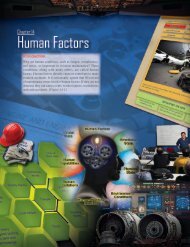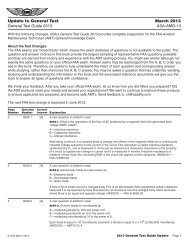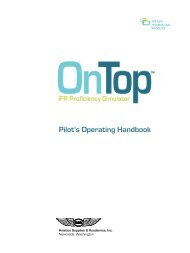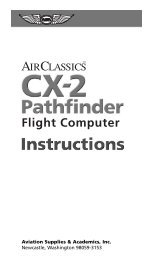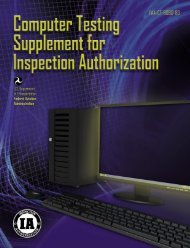E6-B Flight Computer Instructions - Aviation Supplies & Academics
E6-B Flight Computer Instructions - Aviation Supplies & Academics
E6-B Flight Computer Instructions - Aviation Supplies & Academics
You also want an ePaper? Increase the reach of your titles
YUMPU automatically turns print PDFs into web optimized ePapers that Google loves.
The Crosswind Table<br />
To determine headwind, tailwind or crosswind<br />
component quickly and easily, you must know the<br />
angle between your course and the reported wind<br />
direction. You also must know the reported wind<br />
velocity. This will be especially helpful in anticipating<br />
the effect of wind when landing, because wind<br />
reported by a tower, flight service station, or ATIS is<br />
surface wind. These reports give wind direction in<br />
relation to magnetic north and can be compared to<br />
your airplane’s heading indicator without correction.<br />
If you use the table with winds aloft, remember<br />
that those winds are reported in relation to true north<br />
and you must apply variation before comparing<br />
them to the heading indicator.<br />
Figure 20<br />
27





